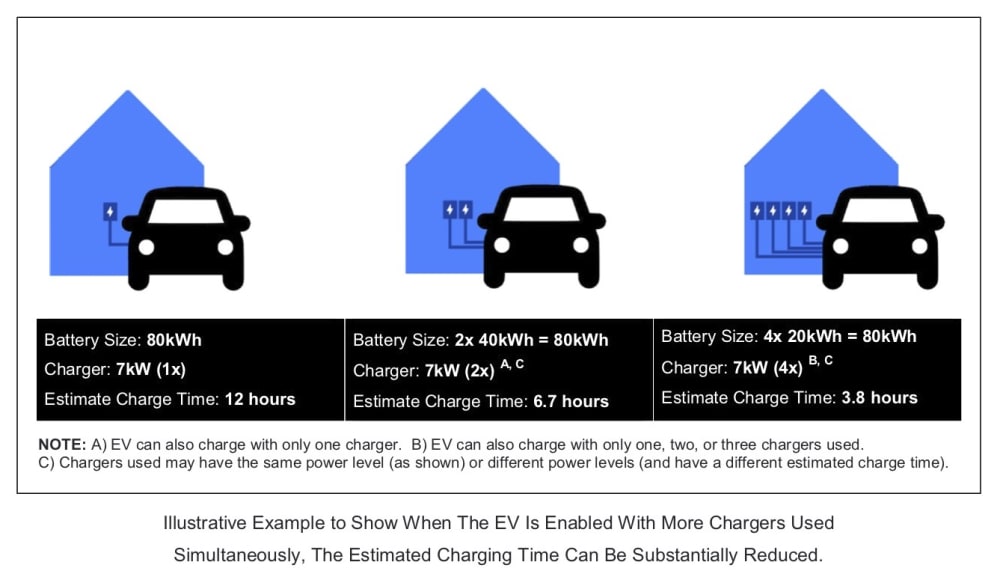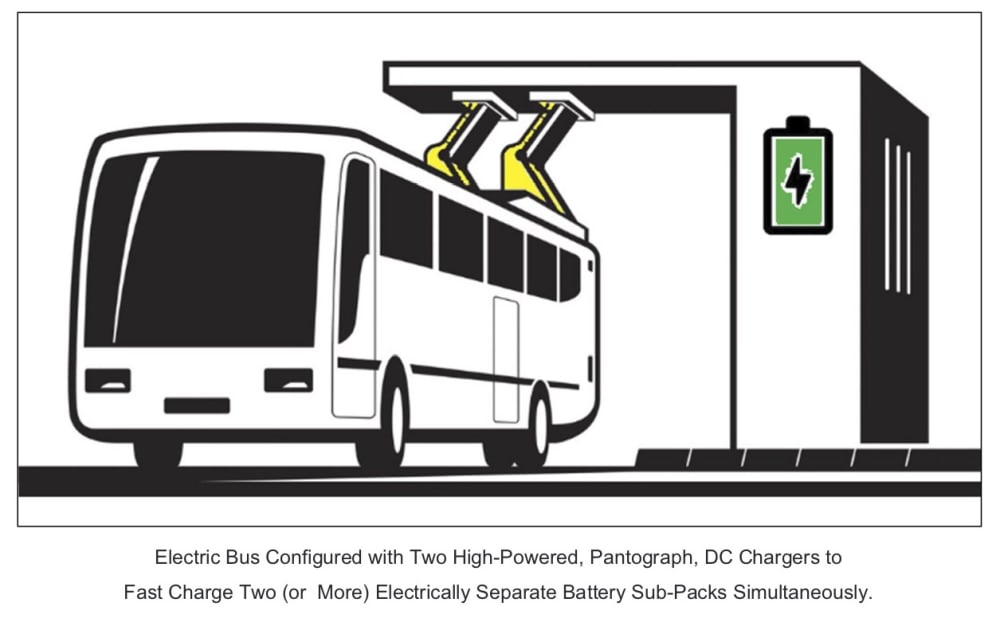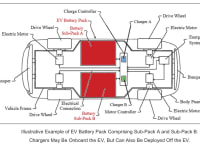[Problem this design idea solves...]
The amount of time to presently charge a battery electric vehicle (EV) at home is numerous hours. Using a public, high-powered, fast charger takes much more time compared to filling up the tank with gasoline or diesel. For example, here are estimated charge times for a 2021 Tesla Model 3 (Battery size: 55-82kWh): [A] 15-22 hours, 3.6kW Charger, empty to full; [B] 8-12 hours, 7kW Charger, empty to full; [C] 40-60 minutes, 50kW Charger, 20%-80%; [D] 20 minutes, 150kW Charger, 20%-80%.
[Potential benefits...]
This idea can reduce the charging time to about one-half, one-third, or more. So instead of 12 hours using a 7kW charger, it is around 6, or 4, or 3 hours to go from empty to full. Likewise, 20 minutes using a 150kW charger is shortened to about 10, or 7, or 5 minutes. Fast charging time will help to accelerate EV mass-market adoption and electrified transportation in general.
[How does this design work?]
Consider a battery pack of an EV electrically separated into two sub-packs A and B, where each of the sub-packs A and B may be charged independently of one another simultaneously. A battery pack with a combined 80kWh capacity, for example, may comprise sub-packs A and B, each with 40kWh capacity. Sub-packs A and B are coupled together and operate in a parallel manner when not charging.
Although each of the sub-packs A and B may take longer to charge than charging half a battery pack with twice the capacity, since sub-packs A and B can be charged simultaneously, the duration required to charge both sub-packs A and B simultaneously is approximately one-half the time it would take to charge a battery pack with twice the capacity of an individual sub-pack A or B.
With a battery pack electrically separated into three sub-packs A, B, and C, and charged simultaneously, the charging time is about one-third the time it would take to charge a battery pack with triple the capacity of an individual sub-pack A, B, or C. In the same way, when separated into four sub-packs A, B, C, and D, the charge time is reduced to about one-fourth. And so on. Further details of the idea are found in US Patent 10,790,680 and 10,978,887. Additional US and international patents are pending.
[Market potential...]
This idea can charge faster with present and future battery types/chemistry and chargers. It is battery technology agnostic. The option to purchase multiple chargers and charge much faster from home is a game-changer for existing and potentially new EV owners. In the commercial space, electric buses and trucks can charge faster using multiple high-powered DC chargers concurrently and are ready to go with less charging downtime.
[Manufacturability and costs...]
The recently revealed 2022 Ford F-150 Lightning truck has dual onboard chargers and gets about 30 miles per charging hour using an 80-amp charge station. Without further details, it sounds similar to the idea presented and appears production-ready at an acceptable cost.
Like this entry?
-
About the Entrant
- Name:Jack Nguyen
- Type of entry:teamTeam members:Jack Nguyen (EZ FastCharge)
James Nguyen (EZ FastCharge) - Software used for this entry:None
- Patent status:patented








